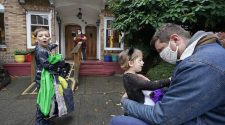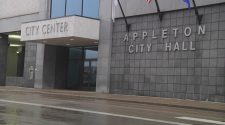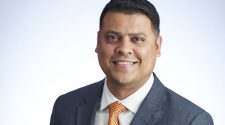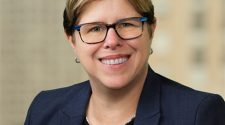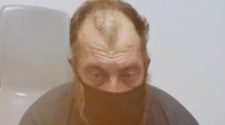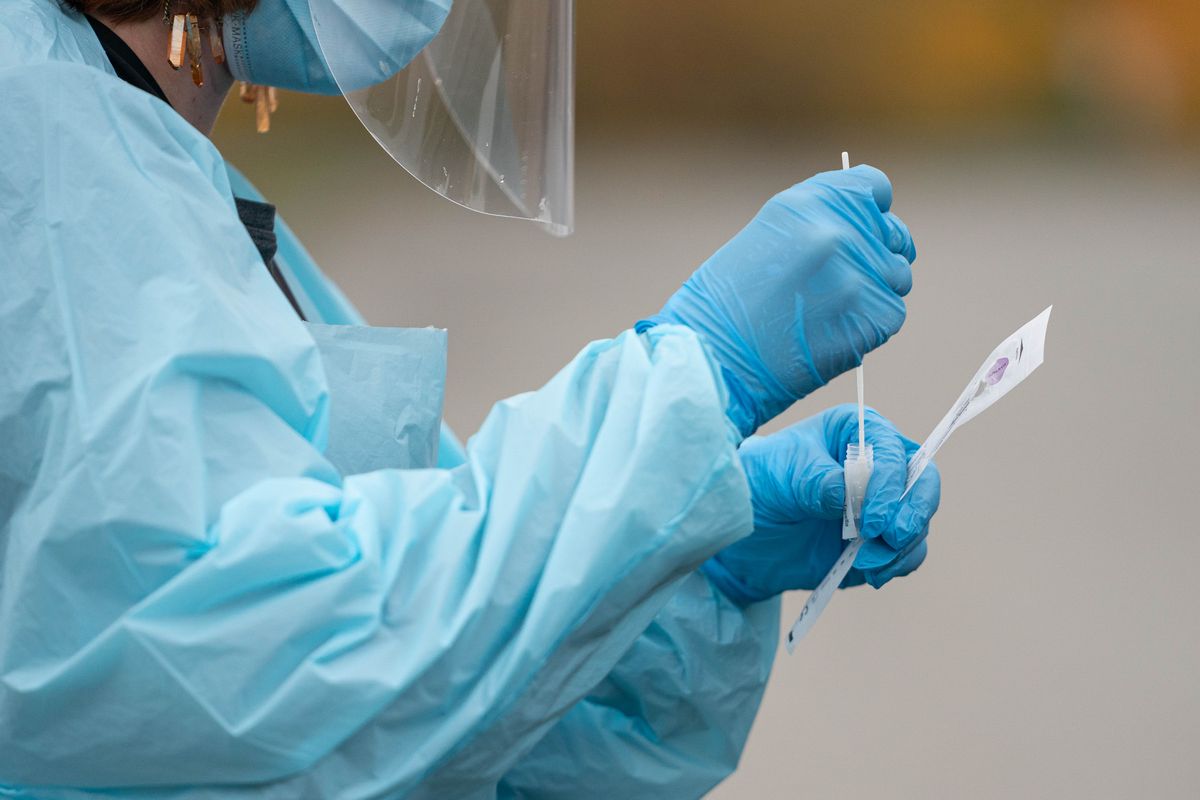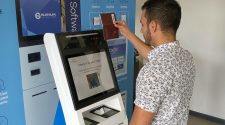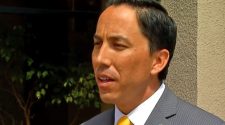Alaska is in the midst of a second wave of coronavirus that’s setting new records and shows no sign of slowing.
Case numbers are surging in Anchorage and Fairbanks but also in isolated, medically underserved rural communities including the Yukon River delta village of Chevak where nearly 18% of the population tested positive in the space of just a few days.
Statewide, there are so many people testing positive that public health workers can’t keep up with the contact tracing that’s a central part of Alaska’s strategy to contain coronavirus.
Alaska statewide case-count records were shattered on Saturday, with 355 new cases reported, then again Sunday with 526 cases. The numbers of people hospitalized in Alaska with COVID-19 hit its highest level at one time so far on Friday, at 59, and 58 were reported hospitalized on Sunday. Hospitalizations are considered a “lagging indicator,” meaning people admitted to the hospital with COVID-19 may have tested positive weeks earlier.
Health officials in increasingly urgent messages say the only way to rein in the surging case numbers is for individual Alaskans to take voluntary steps they’ve been pushing for months: Wear a mask, practice social distancing, avoid gatherings outside the home.
But they’re running up against public pushback amid rising levels of “COVID fatigue” that’s only growing as the pandemic months pass.
“The biggest challenge I feel these days is a sense of, when I talk to the public and community leaders, is fatalism,” the state’s chief medical officer, Dr. Anne Zink, said during a recent briefing. “That’s harder to combat than getting more testing or supplies.”
Asked if it’s too late to stop the continued spread of the virus in Alaska, the state’s two top health officials both simultaneously shout, “NO!”
“It’s not too late for us to stop this surge in cases,” said state epidemiologist Dr. Joe McLaughlin. “We know what works with COVID. We’ve demonstrated it in Alaska, we’ve demonstrated it in the United States, and we’ve demonstrated in multiple countries across the globe: mitigation works.”
Gov. Mike Dunleavy seems to take a longer view, contending that state officials expected to see case counts going up — and he expects that trend to continue.
Dunleavy says that despite rising numbers, the state’s hospitals are “holding steady” and that’s one indicator the state’s response is working. Alaska’s death rates from COVID-19 are falling even as cases increase, he said, and the “vast majority of deaths” are in people with underlying health conditions.
The governor continues to avoid imposing statewide mandates for masking or stay-at-home orders, preferring localized restrictions. Multiple cities — including Anchorage, Fairbanks, Unalaska and Juneau — have instituted mask mandates in some form. Multiple rural villages are currently in lockdown.
Dunleavy held the first COVID-19 news conference in weeks, streamed via Facebook, last Wednesday. He called the virus “very very very infectious” and said the state is “going to see case numbers continue to rise.”
Asked in an interview on Friday about his message compared to those from his top health officials, the governor said he didn’t know if there was necessarily a conflict between saying cases are expected to rise and the assertion Alaskans can slow the spread of the virus.
The governor said he’s trying to strike a balance as the nation approaches a potential vaccine in the coming months.
“We made the assumption that the cases would rise because of its infectious nature, and a lack of a vaccination,” Dunleavy said in the interview.
The state could take more restrictive steps to stop the spread of the illness, he said, but that would involve “extraordinary measures,” in the way of shutdowns enforced by sanctions and arrests.
“Certainly, we could probably shut the virus down,” Dunleavy said Friday. “But then the cost to do that would be, in my opinion, astronomical.”
In a Facebook post Sunday, Dunleavy said, “With yesterday and today’s case counts, it is clear that Alaska has entered an acceleration phase with regard to the virus, though this is not unexpected as Alaskans moved indoors with the changing seasons. The vast majority of the new cases are with individuals younger than age 60, and our hospitalization and mortality rates are still at very low levels per capita…Nothing is going to replace individual action and responsibility, including social distancing, wearing a mask around others, and washing your hands. Together we can slow the widespread community transmission and protect the most vulnerable.”
At first, Alaska kept the virus at bay. Then over the summer a spike in cases was tied to major outbreaks in the seafood industry and leveled off before dropping.
Now cases are in full-on acceleration mode as positive test counts hit new records each week, health officials say.
Asked where people are getting the virus, one infectious disease specialist had a one-word answer: “Everywhere.”
Most Alaskans get COVID-19 from someone they work, socialize, or go to school with, according to a state update this week. Many report that they went to social gatherings, community events, church services and other social venues while they were contagious but before they knew they had the virus.
The common denominator these days is as much behavior as it is a physical location, said Anchorage Health Department epidemiologist Janet Johnston.
“The places where people are keeping their distance and wearing a mask, we have less transmission,” Johnston said.
With winter approaching, more people are moving indoors where the virus spreads more easily. And cases are moving into older populations after predominating in younger people, a group that over the summer drove up new positive tests but generally stayed healthy enough to not need hospital care.
If Alaska follows national trends, the shift into older age groups could predict a rise in hospitalizations and deaths.
Florist Natasha Price makes a flower arrangement in her garage on Wednesday, Oct. 21, 2020. Price said her business Paper Peony is thriving during the pandemic. (Bill Roth / ADN)
Natasha Price, an Anchorage florist, said despite the months that have passed amid a global pandemic, she tries to follow public-health guidelines and remains cautious about socializing. She decided to see a therapist for the first time in her life, via telemedicine.
Price hears younger friends talk about going to restaurants. She has “zero interest” in doing that.
“It seems that the numbers are an all-time high in Alaska right now,” she said. “And I find that deeply concerning.
Alaskans, like people around the country and the world, are tired of staying home and not seeing friends and family. They’re financially gutted by lost jobs and rent bills coming due. Many have dug in on one side or the other — mask up or stay uncovered, go out or hole up, avoid the virus or get infected and boost herd immunity.
Some people don’t answer their phones when contact tracers finally do call. Others say they don’t want to get tested even if they’ve been exposed because they can’t afford to lose time off work.
Dr. Bruce Chandler, Anchorage Health Department medical officer, heard recently about a symptomatic staff member at a residential care facility who continued to work while waiting for a COVID-19 test result.
“One person this week reported having to work several days with customers while infectious because their boss threatened to fire her if she didn’t show up to work,” Chandler said during a briefing.
There’s also strong pushback against any restrictions at all. The governor’s former chief of staff, Tuckerman Babcock, is an administrator of a private Facebook group with more than 7,000 members called OpenAlaska that agitates against mask wearing and pandemic protocols.
“No public health emergency. All mandates should be lifted and the land of the free and home of the brave restored,” Babcock posted Friday.
Everybody is tired of coronavirus, it seems. Even the governor.
Dunleavy, who was captured not wearing a mask at a Republican fundraising event earlier this month, said he generally wears one except when he’s eating, drinking or speaking publicly. The governor said he wears a mask in state office buildings, at the store, and when he’s “mixing with the public.”
He said he takes one off when he’s speaking to a group “for long periods of time” even though it increases the risk of the virus.
“But I also think there needs to be a little fairness and understanding in that I probably altered my life 80 to 90%,” Dunleavy said, listing some of the changes including leaving the state by plane just once since February, limited face-to-face meetings and reduced in-state travel.
“I could go on and on and on but the point I’m trying to make is, there are times that you’re going to wear a mask and you should do it as much as possible,” he said. “And there are times that you’re not and the times that you’re not, I don’t think should be, you know, considered an attempt at harming people.”
Wasilla resident Helen Lindsey pulled on a surgical mask as she and her husband got out of their sedan at Three Bears, a grocery chain that does not require customers wear face coverings.
Inside, maybe half the customers and some cashiers wore them too.
The store where Lindsey works does require face covers. She was asked to hand them out to customers not wearing them. People cursed at her, yelled in her face, and threw the masks back at her.
Lindsey said she doesn’t like the pandemic restrictions any more than the next person. She had no physical contact with her husband, Mike, for weeks after he broke his leg over the summer and ended up in the hospital and then rehab. They talked by phone, separated by glass.
She feels like her family has buckled down enough. It’s time for other people to start following protocols.
“I’m so sick of it,” she said.
Some people don’t seem to take the virus seriously unless they experience it first-hand, medical providers say. Statistics show that about 20% of Alaskans hospitalized with COVID-19 will die.
Dr. Nicholas Papacostas, who serves as vice president of the Alaska chapter of the American College of Emergency Physicians, said his emergency room colleagues worry they’ll be stretched thin unless Alaskans start taking steps to slow the spread of the virus.
The underlying concern is that hospitals could hit full capacity and then go past it, even with surge plans hospitals already have in place. That could compromise staffing ratios and degrade the level of care.
“It’s heartbreaking to actually lay hands on one of these patients and have the sinking feeling as you care for them in the ER that this person is heading for the ICU and statistically they’re not going to do well, and open their chart a week or even a month later and see they did in fact die,” said Papacostas, who practices emergency medicine in Anchorage.
“It’s real. There’s real suffering happening,” he said. “And I don’t know how to make people understand that.”
Reporter Zaz Hollander reported from the Mat-Su. Morgan Krakow and Annie Berman reported from Anchorage.

